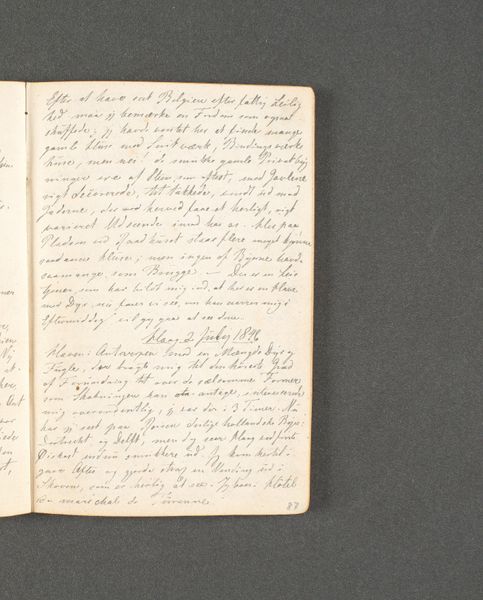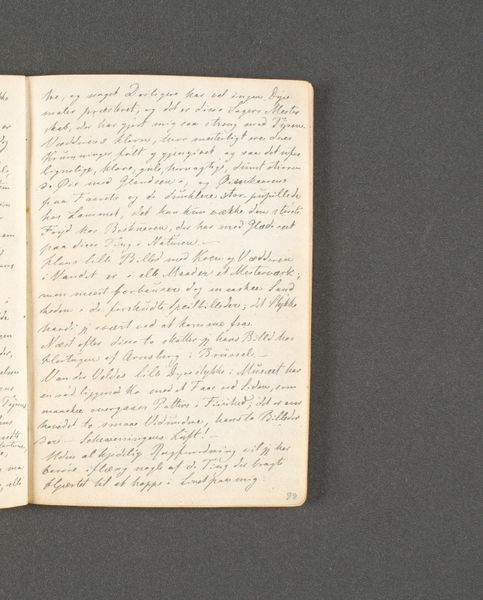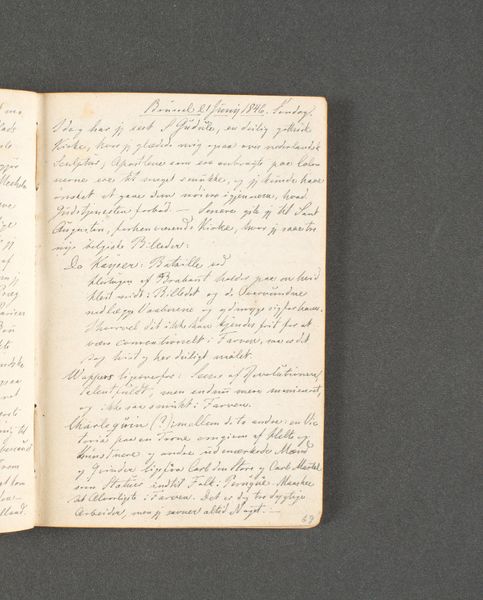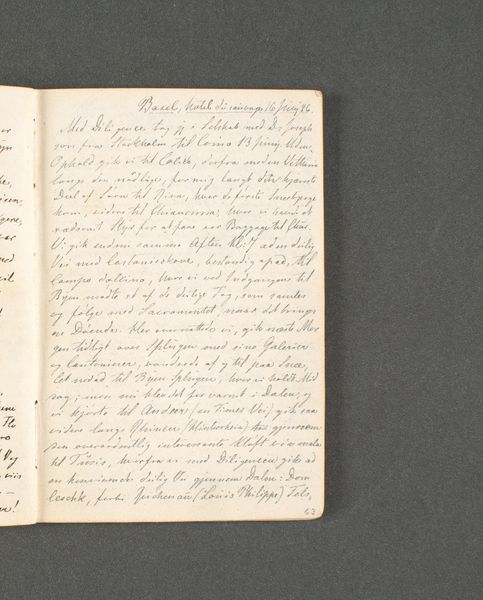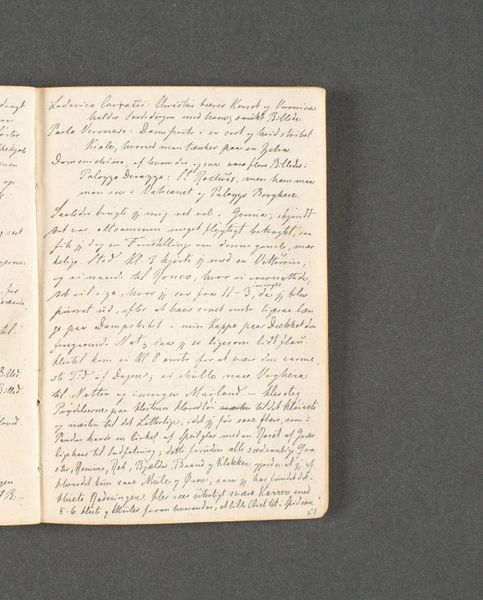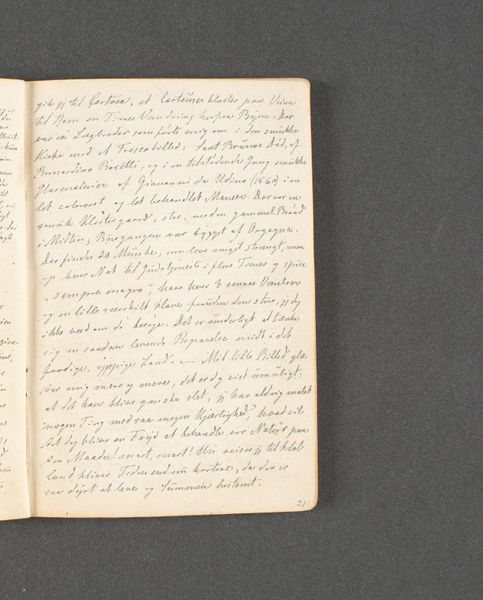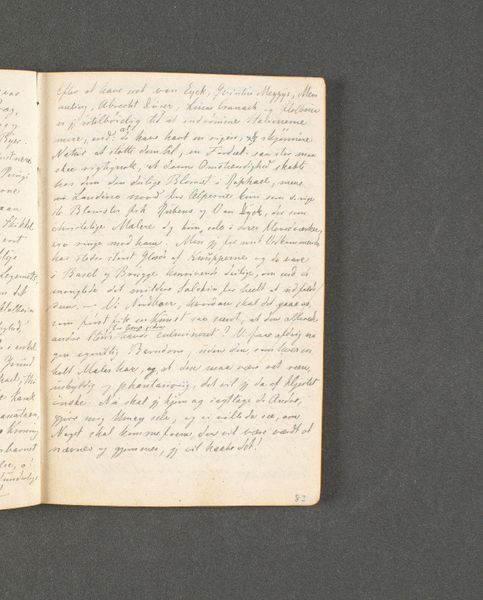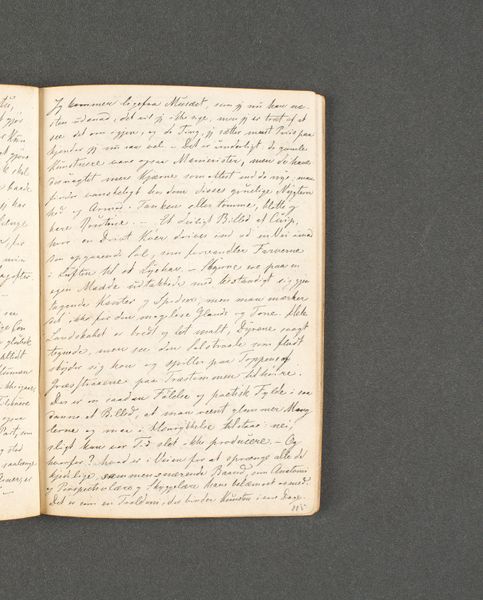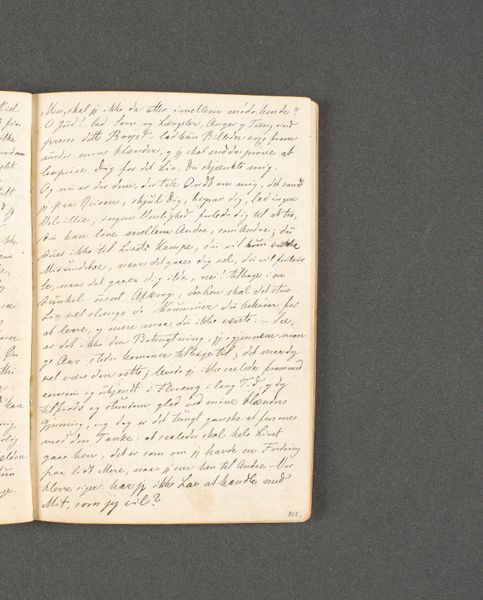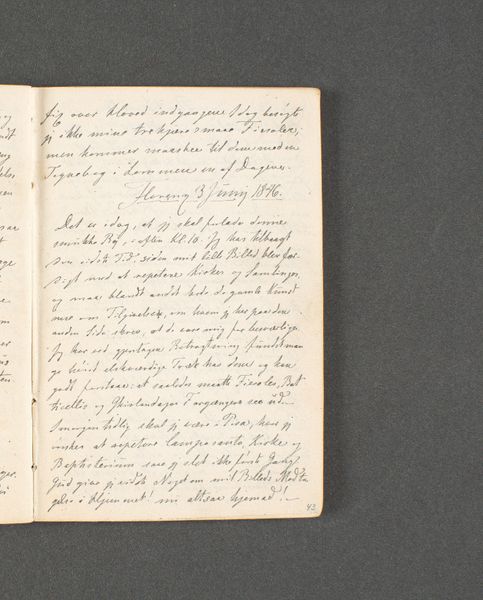
drawing, paper
#
drawing
#
narrative-art
#
landscape
#
paper
#
romanticism
Dimensions: 131 mm (height) x 89 mm (width) (bladmaal)
Curator: Here we have Johan Thomas Lundbye’s “Rejsedagbog. Bruxelles,” created in 1846, a drawing on paper. What are your initial impressions? Editor: It’s…writing. Like pages from a personal journal? I notice the handwriting is dense and fills the entire page. What do you see in this piece? Curator: I see echoes of the romantic sensibility through the very act of journaling. Lundbye seems to be attempting to capture the ephemeral— fleeting thoughts and sensory experiences—linking it directly to place, in this case, Brussels. These handwritten notes become symbolic containers, holding fragments of cultural memory related to travel, experience, and observation. The text itself, though difficult to decipher completely, hints at landscape descriptions. Can you feel the connection between the visual act of writing and Lundbye's experience of a specific location? Editor: Yes, I can see that, almost as a form of preservation. Like taking a photograph, but with words. Is the handwriting style of the time significant? Curator: Absolutely. Handwriting in the 19th century possessed a strong individual character. Consider how much communication was done through letters, how one's character would be shown, even judged, through script. His hand becomes an emblem, a sort of self-portrait interwoven with his observations, further blurring the boundary between objective reality and subjective interpretation. The physical act of writing, pressing pen to paper, is performative in its own way, inscribing both text and self onto the landscape of the page. Editor: So, the handwriting becomes a symbol of Lundbye's individual experience and the romantic era's fascination with capturing fleeting moments. Fascinating. Thanks for opening my eyes to that! Curator: Indeed. It’s about looking deeper into not just what is represented, but *how* it’s represented. A powerful lesson from a simple drawing.
Comments
No comments
Be the first to comment and join the conversation on the ultimate creative platform.
